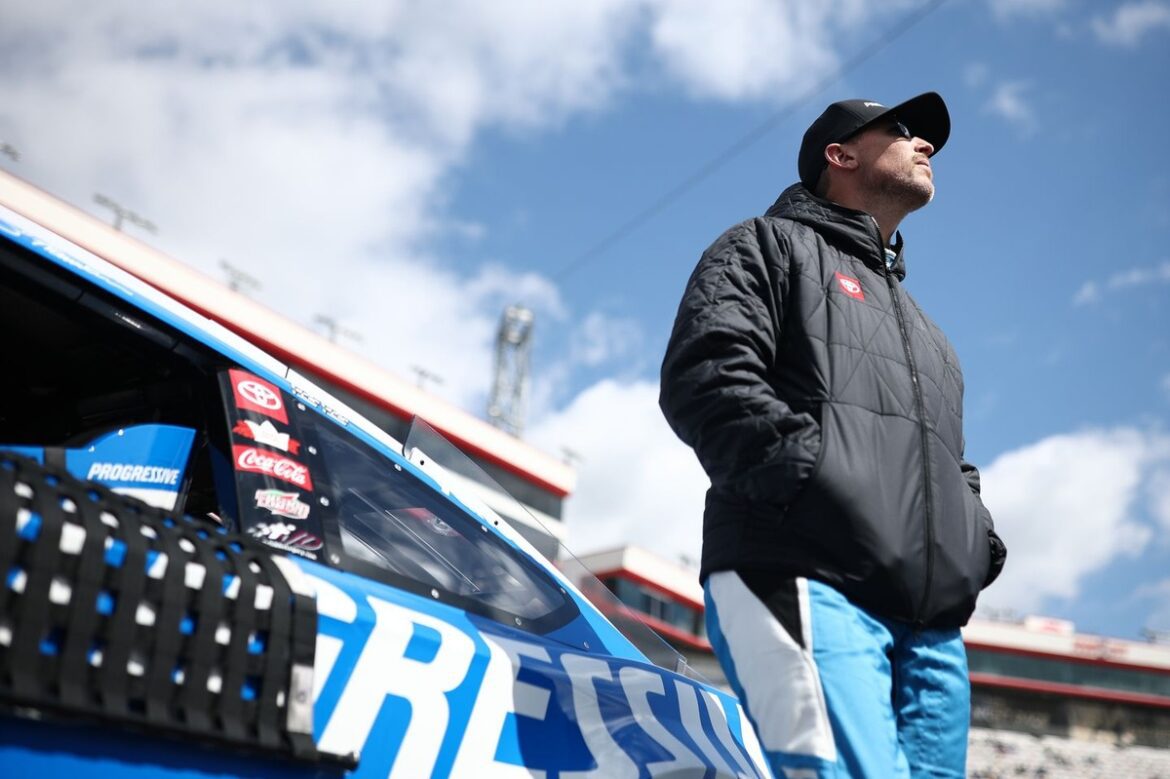In recent discussions within the NASCAR community, a debate has emerged surrounding Denny Hamlin’s comments about a proposed rule change allowing teams to construct cars beyond the established guidelines for the All-Star Race. This proposal was intended to explore innovative approaches to enhance the performance of short-track vehicles. However, it faced immediate rejection from the teams, primarily due to concerns over potential costs.
Denny Hamlin, a prominent figure in NASCAR as a co-owner of 23XI Racing, voiced strong opposition to the idea, citing the possibility of up to $2 million in expenses. Given that the winner of this annual exhibition event receives only $1 million, his financial argument raised eyebrows. In response to his claims, NASCAR took to the Hauler Talk podcast to clarify the situation and counter his assertions.
Mike Forde, who serves as the managing director of racing communications for NASCAR, provided insights into the timeline of the proposal. He stated that the idea was presented to competition directors on March 12 of this year, following prior discussions about its implications. During this meeting, team representatives expressed their concerns, which ultimately led to the proposal being shelved.
Diving into the financial aspects, Forde addressed Hamlin’s contention regarding the costs associated with the proposed changes. He remarked, “Denny suggested that this could potentially cost $2 million. I believe his calculations were significantly off. The reality is that the cost could be zero or, in some cases, even save teams money.” Forde elaborated on this point by explaining that Hamlin’s reasoning involved the idea that building a competitive car would require substantial investment in new parts. He indicated that if a car’s construction costs $300,000 and a team possesses three cars, the investment would escalate rapidly if every part had to be modified extensively. This could result in $900,000 of parts becoming obsolete since they wouldn’t be usable in any other races throughout the year.
Furthermore, Forde pointed out that Hamlin’s estimate included the creation of new components with partners at Joe Gibbs Racing, which he claimed could also add an additional $1 million to the costs. However, Forde emphasized that the guidelines presented to teams did not allow for modifications or the creation of new parts, insisting that all components had to come from a single source.
During the podcast, Hamlin took to social media to respond to NASCAR’s comments, sarcastically noting that operating a race team had never been so easy and expressed disbelief at the idea that it wouldn’t cost anything. This exchange highlights the tension between Hamlin’s perspective and NASCAR’s position on the issue.
Forde further clarified how teams could have potentially minimized costs under the proposed guidelines. He suggested that teams not interested in innovating could simply utilize older body panels that might not be race-ready for major events but could still be suitable for the All-Star Race. While he acknowledged that larger teams might not consider this option, he mentioned that smaller teams could find it a practical solution.
As the discussion unfolded, more details emerged about what teams could have done with their vehicles under the proposed rules. The allowances included unenforced damper lengths, which would enable teams to adjust ride heights without penalty. While total and right-side weight regulations would remain in place, teams would have the freedom to manipulate nose weight. Additionally, they could mix and match various spoiler types and select between different diffuser designs, such as the intermediate or short track versions, along with making some underbody adjustments.
However, Forde reiterated that teams would not be allowed to alter the chassis, contrary to Hamlin’s assertions. All components would need to be sourced from existing single-source parts, maintaining a level of consistency across the board.
The podcast also touched on why Denny Hamlin’s name frequently comes up in discussions. Forde pointed out that this was not the first instance in recent weeks where Hamlin claimed a lack of thoughtful consideration behind the proposal. Forde firmly stated, “There was a dedicated working group focused on these ideas for several months. A significant amount of thought went into this initiative.” His comments aimed to emphasize that the proposal was not made lightly or without careful planning.
This exchange between NASCAR and Denny Hamlin underscores the ongoing conversations within the sport regarding rules, costs, and the future of racing. With the All-Star Race approaching, teams and officials continue to navigate the complexities of regulations while striving to enhance competition and innovation in the sport.
As the landscape of NASCAR evolves, discussions like these are essential for understanding how teams can balance costs with the need for competitive advancements. The dialogue between prominent figures like Hamlin and NASCAR officials provides fans and stakeholders with insight into the operational and financial challenges faced by teams, as well as the governing body’s efforts to foster an environment conducive to innovation while maintaining a level playing field.
Listeners can find the complete podcast discussion online, offering further insights into the intricacies of this proposal and ongoing conversations in NASCAR.
This situation exemplifies the broader challenges that racing teams encounter as they attempt to push the boundaries of technology and performance while remaining compliant with regulations. As the sport continues to evolve, it will be interesting to see how teams adapt to new rules and how discussions like these shape the future of NASCAR racing.
